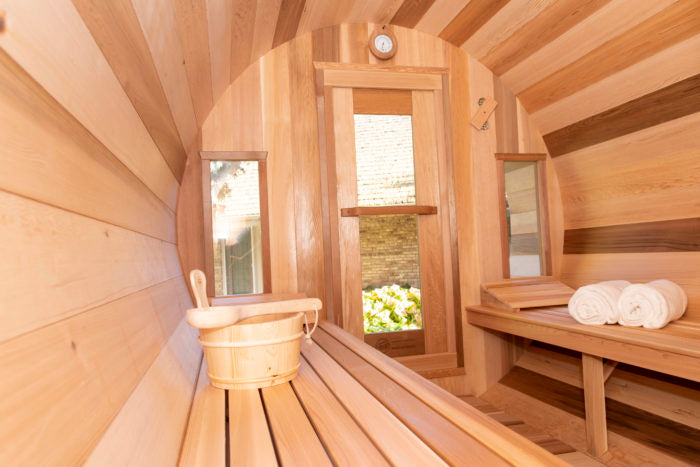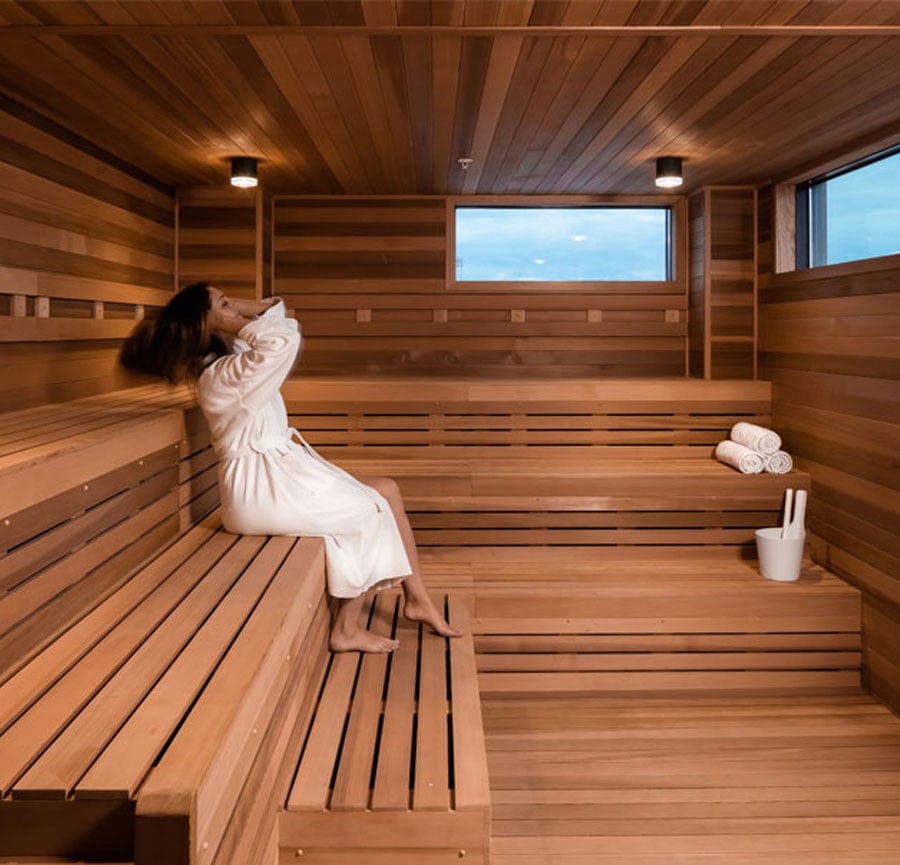More About Traditional Sauna
More About Traditional Sauna
Blog Article
Traditional Sauna Can Be Fun For Everyone
Table of ContentsNot known Facts About Traditional SaunaRumored Buzz on Traditional Sauna4 Easy Facts About Traditional Sauna DescribedSome Of Traditional SaunaRumored Buzz on Traditional Sauna
The majority of the weight lost in a sauna is water loss and is re-gained upon rehydrating. However, without a question sauna can be a fundamental part of a healthy and balanced weight management program. To check out the distinctions in between typical and IR saunas, I will separate these into verifiable, theoretical, and fabricated differences.Therefore, the best factor in the saunawhich goes to the ceiling straight above the sauna heateris usually between 185 and 190 F. Claims that a conventional sauna surpasses 200 F is just not true and not appropriate for electric saunas sold in the US. The temperature level for a far-infrared sauna is generally set between 120 and 140 F; however, unlike the conventional sauna, the goal in and IR space is not to accomplish a heat.

When a typical sauna has been appropriately heated up, the sauna wall surfaces are cozy, the air temperature has actually achieved established temperature and the rocks are extremely heated. As a fascinating side note, the warmed wall surfaces and the rocks are producing far-infrared heat, integrated with the warmed air, to produce an "enveloping warmth".
10 Easy Facts About Traditional Sauna Described
When the heat is attained, the elements cycle on and off to preserve the high temperature level. Many standard sauna customers delight in putting water over the rocks to develop steam to increase sauna humidity degrees. The advantages of putting water over the rocks include: making the area much more comfy, dampening the nasal flows, and permitting the usage of aromatherapy by mixing necessary oils with the water.

When the energy gets in the body, it triggers the body temperature to boost and ultimately results in perspiration. In an infrared sauna it is essential for the emitters/heaters to stay on practically continuously. Because there is no mass of rocks to keep warmth, the sauna will cool down if the emitters turned off.
Not known Incorrect Statements About Traditional Sauna
As discussed over, the sauna bather in an infrared space wishes to place himself before running emitters to obtain maximum advantage from the heat. The home imp source heating time for both rooms can be very various, relying on exactly how the rooms are made use of. For a traditional sauna, a bather should enable 30-40 minutes for the space to achieve a desired temperature level and to correctly pre-heat the rocks.

A well built sauna will commonly accomplish a temperature level of 150-160 F in concerning 30-40 mins. For hotter temperature levels, the room may need to warm for a longer duration.
To some, 15 mins was "squandered" while the infrared power heated up the timber panels instead of heating a body, while others find a pre-heated room to be much more comfortable and believe a raised beginning temperature is necessary to start sweating. The size of advised usage for each and every space is around the very same (10-15 mins per session); nevertheless, because of the lower air temperatures and the capability to really feel the effects of infrared heat faster than a typical sauna, it is not unusual for a person to continue reading this invest an overall of 20-30 mins in an infrared sauna.
The Traditional Sauna Ideas

The typical cost per kWH of electrical energy in the united state is roughly $0.11, so a 4.5 kW heater will certainly set you back roughly $.50 to run for one official site hour, if the heater runs continually for one hour. Usually a sauna heating system will run for 75% of the initial hour and 50% of succeeding hours on since the elements cycle once the set temperature is accomplished.
A 2 individual far-infrared room is typically literally smaller than a standard sauna, often about 4' x 4' or smaller sized. The IR heating system is commonly 1.5-1.7 kW using a 120 volt 15 amp plug-in service. Because the room can be utilized earlier than a sauna area, we will certainly think the space is made use of for to of an hour consisting of warmth up time.
There is a hardly ever discussed difference in the social experience in between the two areas. While our culture has actually lost several of the social advantage of the conventional sauna experience, it can be extremely socially satisfying (Traditional Sauna). From household time in the sauna, to heart-felt discussions with substantial others, to sauna partiesthe conventional sauna experience can result in intimate interacting socially
About Traditional Sauna
A lot of higher end infrared areas include tinted light treatment, noise systems and full-glass fronts.
Report this page